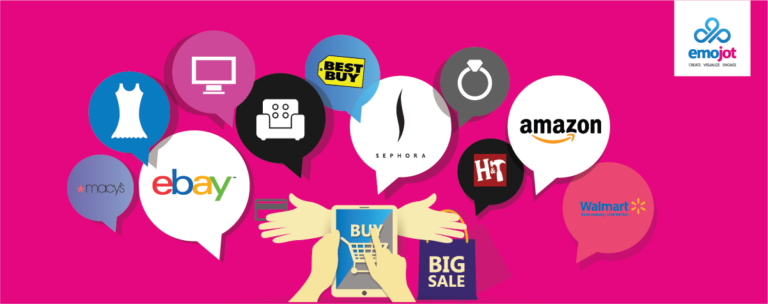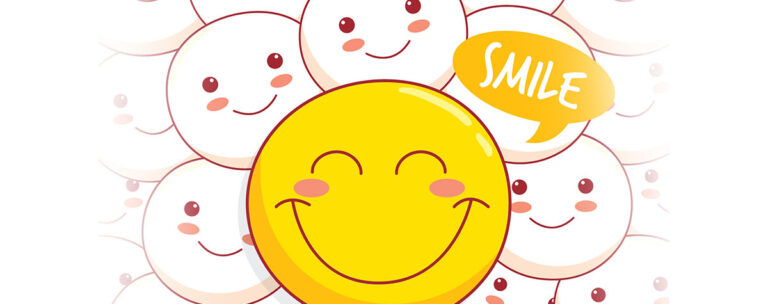
For decades, Black Friday has loomed large in the retail world, as we discussed in the first in our series of blogs on this extraordinary shopping event. In fact, even the phrase “Black Friday” might conjure up images of long lines twisting around storefronts, crowds of people clustered in front of glass doors about to open, and masses of fast-moving shoppers rushing through aisles. In fact, many view this shopping event as an annual outing, and its attendance even outpaces that of popular amusement parks. According to U.S. News and World Report, “Americans spend more time shopping on Thanksgiving weekend than they do visiting Disney hot spots,” with a stunning “fifty-five percent of Americans” partaking in the purchasing. As most Black Friday aficionados can attest, there is a particular satisfaction in discovering the perfect sale item in the store and carrying it triumphantly out the doors. At the same time, digital technology has transformed nearly every facet of modern life, and shopping is no exception. In all likelihood, you use a digital cart just as often as a real one, clicking on your favorite items rather than taking the time to go pick them up in the store. The magic of Black Friday has always been in making holiday shopping more convenient for customers, understanding and catering to their needs. While this unique retail event still undoubtedly takes place in person, it is increasingly popular online, as well. The savviest companies leverage both in-person and Internet Black Friday techniques to attract customers and amplify their profits during the holiday season. At Emojot, we use sophisticated technology to help businesses better understand how their customers feel. Our innovative Emotion Sensors® allow respondents (emoters) to express their emotions using their favorite digital tools – emojis! We are passionate about helping enterprises expand […]

Black Friday is far and away the biggest shopping event of the year. Over 100 million people dragged themselves out of Turkey comas and into bustling stores in 2016 alone, according to The Balance. Millions more participated in the shopping festivities online. However, despite Black Friday’s undeniable popularity, it’s also one of the most often misunderstood marketplace extravaganzas. With mysterious origins and an uncertain future in this digital age, many retailers aren’t sure quite what to make of Black Friday. Unfortunately, this results in myriad missed opportunities for all kinds of companies, who could be giving their customers happier holidays while boosting their businesses. At Emojot, we’ve designed state-of-the-art surveys to help companies better understand how their consumers think and feel about their products, services, and sales. Our emoji-based surveys (called “Emotion Sensors®”) give businesses invaluable insights into their customers’ reactions to their brands. Our research team realized what a difference truly understanding Black Friday could make for our clients, so we decided to do what we do best: an Emotion Sensor®! We received responses from hundreds of customers, who shared their emotions, opinions, and general reactions to this massive shopping event. In the following blog, learn more about the origins of Black Friday, current trends, and what we discovered based on our innovative Emotion Sensor®! This is the first in a series we’ll be publishing covering the ins and outs of Black Friday in depth, so check back next week! Black Friday Beginnings Even the most zealous shoppers and busiest retailers likely don’t know why this day after Thanksgiving event is called “Black” Friday. As it turns out, this name has quite the storied, and varied, history. The History Channel explains: “The first recorded use of the term ‘Black Friday’ was applied not to holiday shopping but to the […]

From their international origins to the latest literary “emojification” to Emojot’ innovative Emotion Sensors®, learn more about these quirky characters’ past, present, and future. Your friend sends you a hilarious text, and you respond with the “crying laughing” emoji. You text your significant other a “winky face.” Your mom sends you a Thanksgiving message with a heart and a tiny turkey. These are probably at least somewhat familiar experiences. According to a recent report in WIRED magazine, “fully 92 percent of all people online use emoji now, and one-third of them do so daily.” WIRED even goes so far as to suggest that the rise of emoji represents “the birth of a new type of language.” More than likely, these little graphics and symbols have changed the way you communicate with friends, loved ones, coworkers, and virtually everyone else. However, despite their ubiquity, chances are, you don’t actually know very much about the characters you use. At Emojot, we’re revolutionizing the worlds of business, human resources, and entertainment, all with emojis, so we know quite a bit about them. We love sharing our infectious enthusiasm for emojis with our clients and showing them these symbols’ hidden power. In the following blog, we describe the top five things you never knew about emojis. 1. These quirky characters hail from Japan. While they are immensely popular around the globe, emojis were originally created in Japan. In fact, the word “emoji” is a combination of the Japanese words for “character” and “picture.” As Digital Trends explains, Shigetaka Kurita was the “designer of the first emojis for cellphones…[who] first created emoji while he was a member of a team that, at that time, was preparing for the debut of…the world’s first mobile Internet system.” The advent of emojis on this project was back in […]

With technological advancements the importance of maintaining staff morale for production line workers is a priority that organizations should focus on. Production line work is arguably one of the most physically taxing jobs. Although technology and automation have made it easier, the importance maintaining staff morale in this sector is more important than ever. In fact, the nature of these jobs make it essential for managers to keep their people happy. An article in The Washington Post provides a compelling description of life in the production industry. It chronicles the work of Chris Young – a factory employee who mentions long commutes, irregular hours, difficulty handling childcare and dismal pay. But perhaps the most compelling sign of poor engagement is when he explains management’s lack of interest in his (and others’) welfare: “No one’s really worried about the fact that you’re so exhausted from working seven days a week, you’re dependent on some drug to stay awake, or dependent on some drug to [fall] asleep, or for pain…” Job challenges aside, it would be shocking for management to expect morale to be high in such an environment. Young’s employer is the very antithesis of an employer who understands or values engagement; however, not every organization wants to follow this example. With the right approach, this industry can create a work environment conducive to strong, consistent engagement. Start at the Bottom In the 1957 film, 12 Angry Men, Juror # 6 says “Well, I’m not used to supposin’. I’m just a workin’ man. My boss does all the supposin’.” While this movie has nothing to do with engagement, the line is quite revealing of how companies were once (and in some cases still are) managed. Essentially, the character illustrates how it’s not his job to think or make decisions; that’s his […]

A Play by Play of the Company’s Vision, its Earliest Inception, and a WIP Towards a Continuous Mission in the Technology Space There is always a distinct history behind any organization – how it began, its first steps, important milestones achieved and the people who have worked towards making its initial vision a reality. Our vision which eventually became a reality was Emojot – a company that has grown remarkably over the past few years. So, sip on a cup of coffee (or tea if you like!) as we take you through a stroll down memory lane on how it all began. So, How Did it All Begin? Our company’s vision – to be the global leader in customer experience solutions with our emotion-based customer/employee/audience engagement solutions – was given its roots when our very own CEO, Dr. Shahani Markus was a lecturer at the University of Moratuwa, a top-notch university, that had a reputation for producing some of the most intelligent graduates within the Sri Lankan tech industry. Dr. Markus was an inspirational mentor to her students and was responsible for supervising the university’s final year projects. With her vision of encouraging students to create startups, she bootstrapped a product concept with two of her students – Andun Sameera and Sachintha Rajith in 2014. The founding team also included Dr. Markus’ colleague Manjula Dissanayake, who came with prior experience in the product space. In 2014, Emojot’ magic began with these 4 special and dynamic individuals. Converting Initial Meetings into Positive Proceedings With our founding team at Emojot working hard and overcoming the challenges that came their way, we were fortunate enough to be named as one of the top 3 event technologies at a conference held in Australia in 2015. This was certainly a massive stepping stone for us. Our success […]

In celebration of World Tourism Day, Cinnamon Hotels & Resorts presents the second edition of the Cinnamon Future of Tourism Summit on the 26th of September 2017. With an aim to increase the growth and development of travel and tourism in Sri Lanka and Asia, the event will feature the world’s top innovators of the travel & tourism industry. The discussions will be conducted by an elite panel of globally recognized speakers including Rene Massatti (Brand Ambassador, TRENDONE), Dr.Sanjay Nakdarni (Director of Research & Innovation, Emirates Academy of Hospitality Management) and Brekke Fletcher (Executive Editor, Travel for CNN). With a pioneering reputation of providing a platform that leverages the power of emoji’s and transforms engagement with a simple touch, Emojot is honored to participate as the official engagement partner at this event. Emojot will use its transformative crowd-sourced engagement and feedback capabilities for live audience engagement and panel moderation – where they would simply have to access the platform via a URL (instead of the usual apps that require downloading) and send top-of-the-mind questions directly to the respective speaker, then and there. With Emojot’ VOA engagement platform, the Future of Tourism Summit will have the ability to understand crowd perception individually and collectively, increase levels of crowd perceptual sharing and engagement and generate real-time insights on applicable future improvements. We believe that any organization/business should focus on using a platform that humanizes emotions and generates voice of customer/voice of employee/voice of audience insights in real-time. By leveraging the power of emojis on our platform in a futuristic techy world, we are delighted to present an emotion-based, feedback mechanism that converts into real-time engagement. Real-time engagement that can lead to positive business outcomes at every step of the way. Want to explore more? Share your details to schedule a personalized […]

We are all about the notion in believing the customer is king and what not! It’s true, isn’t it? As a brand, although we start the engine, the customer is in the driving seat- steering us all the way. He/she will decide where we are headed and it’s up to us to ensure that our engines are oiled and ready for the joy ride ahead. If you get this notion right, you’re good to go! If you don’t, prepare yourself for some heavy repairs that consume lots of time and energy – that could have been saved if you only understood what was wrong. Listen up. The Voice of the Customer is what’s going to save your brand and your peace of mind (phew!). To make your life easier, let me take you through a couple of essential steps to start your Voice of Customer Program. Listen Up! Everyone loves to give their two cents on everything. It’s a part of being human. Listening, however, is something that should be practiced over time. It’s an acquired skill. Especially true, when it comes to nurturing a good relationship with a significant other. Believe me, when I say, most people never listen and don’t even realize the value of it. In this context, however, listening to your customers adds onto your learning curve to steer your brand in the right direction. Yes, improving their experience is supposed to be on top of the list for most organizations. But, the starting point of improving their experience begins as soon as you take the time to listen to them. Listening will enlighten you on how you can get a lifetime commitment from your customers. It’s just around the corner. So, it’s high time for you to listen. Listen to them and show them that […]







